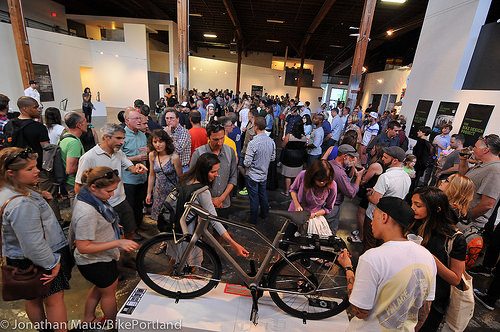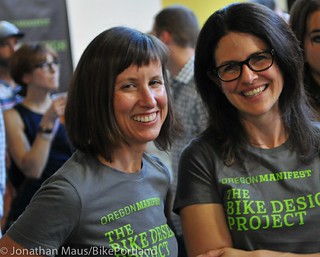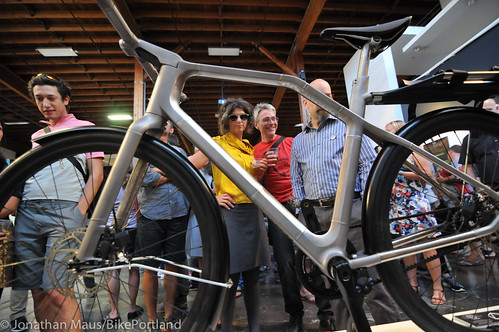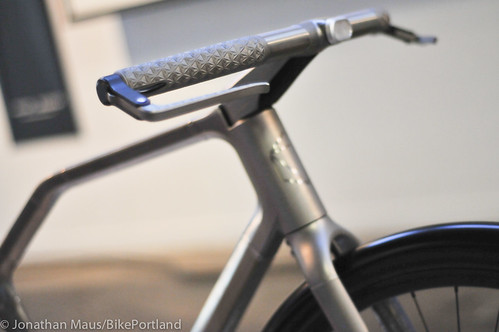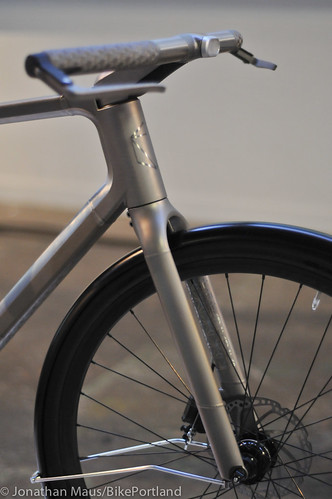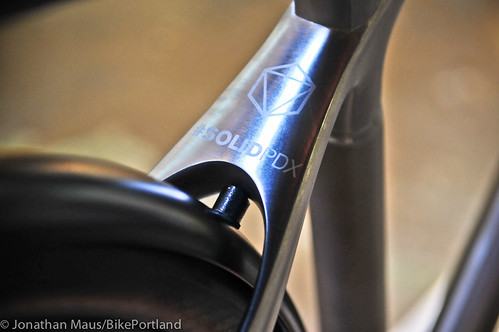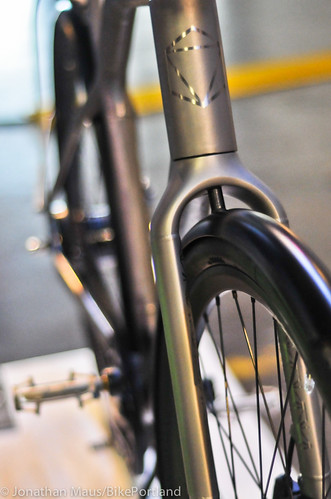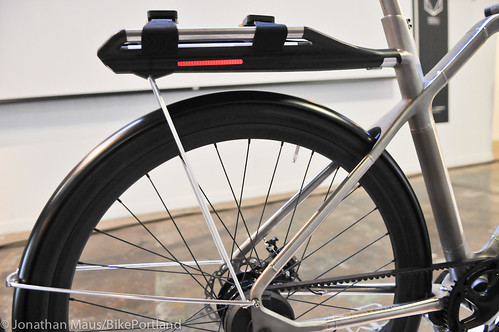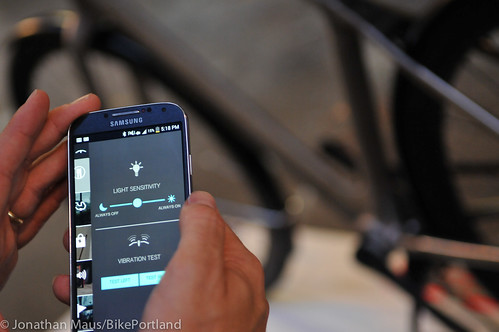What happens when top design firms are paired with expert bike makers and told to create the “ultimate urban utility bike”? Thanks to the Oregon Manifest Bike Design Project we now know the answer to that question.
On Friday night, teams from five cities — New York, Seattle, Chicago, San Francisco and Portland — revealed their designs at five simultaneous parties. It was the climax of an eight-month collaborative process that took city bike design and engineering into completely new territory.
The organizers behind this competition believe that urban bikes get the short end of the R & D stick in the U.S. bike industry. “We think it’s the most important — yet least evolved category,” said event co-founder Shannon Holt, referring to the low priority city bikes are given (compared to racing bikes) by major bike brands.
Holt and her partner on the Manifest event, Jocelyn Sycip, hope the designs created in this competition will influence U.S. bike makers and convince them to take city bikes more seriously. To put a finer point on their goal, they inked a deal this year with Fuji Bikes who has agreed to mass-produce the winning bike. Instead of a judging panel like years past, this year’s winner will be decided by a public vote. Voting opens today and goes through August 3rd.
At Friday’s party, we saw the Portland entry for the first time. It did not disappoint. Dubbed “Solid,” by the team of Industry and Ti Cycles, the bike drew lots of attention.
To create the Solid concept bike, the designers leaned heavily on the expertise of Dave Levy, a man with nearly three decades of custom frame building under his belt. Using a 3D printer, Levy and the Industry team designed tubes and parts out of titanium. It was a process Levy had never gone through before and he was quite excited to tell me about it…
“With the printer, you can make shapes and pieces that it’s impossible to make any other way. You can vary wall thickness, vary shapes, and you can put material in areas it’s not possible to do any other way. Take the fork crown for instance. It has an interior structure that’s like a lattice. It looks similar to the structure you see inside of a bone. There are thin walls on the outside that are skins, then a lattice work that spreads loads to all the different points internally.”
Thanks to internal routing of all its wiring and cables, the look of the Solid bike is very clean. Here are a few detail shots…
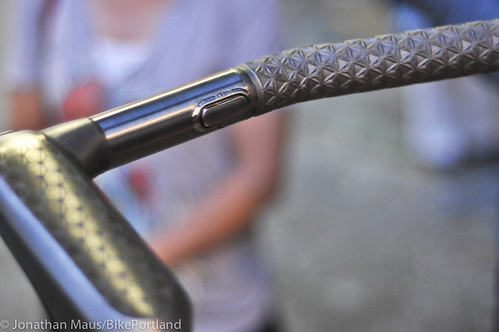
Advertisement

The Portland entry boasts a bunch of other neat features:
- Integrated, dynamo-powered front and rear lights. It also has side visibility due to a strip of red LEDs along both sides of the detachable rear rack.
- Electronic shifting via a push-button on the handlebars.
- The bike has bluetooth connectivity and its own smartphone app. The app turns on and off the lights, tracks the GPS signal, and also delivers route guidance via vibrations in the handlebars that tell you which direction to turn.
But it’s up against some stiff competition. Each team produced a video to introduce their bike. Here’s the Portland video:
Here are the videos of the four other entries:
San Francisco: Huge Design x 4130 Cycle Works – “EVO” – a hybrid bicycle that leverages a modular accessory platform for ultimate flexibility.
Seattle: TEAGUE x Sizemore Bicycle – “DENNY” – a bicycle to enable travel through the very diverse and unpredictable city that is Seattle.
New York City: Pensa x Horse Cycles – “MERGE” – an urban bicycle loaded with integrated functionality at your fingertips so you can RIDE YOUR WAY.
Chicago: MINIMAL x Method Bicycle –“BLACKLINE” – a bike for cruising during the summer months and able to contend with the rugged Windy City winters.
I love the versatility of the front and rear racks on the “Evo” from San Francisco, the handlebar/u-lock idea on the “Denny” is really clever, and the “Blackline” from Chicago has a striking look and some legit utility features. All the bikes have integrated lights and all but one opted for a belt drive. I was surprised we didn’t see or hear any mention of bells or horns and I thought there would be more entries with electric assist (there was only one). Overall, these are some impressive machines. It will be interesting to see which one is the most popular with the public and whether or not the bike industry takes note.
All five bikes will make the trip to Las Vegas in September to be displayed at the Interbike trade show (in the Chrome booth). Public voting is now open and goes through August 3rd. The winning bike will be produced next year. Learn more about each bike and place your vote at OregonManifest.com.
